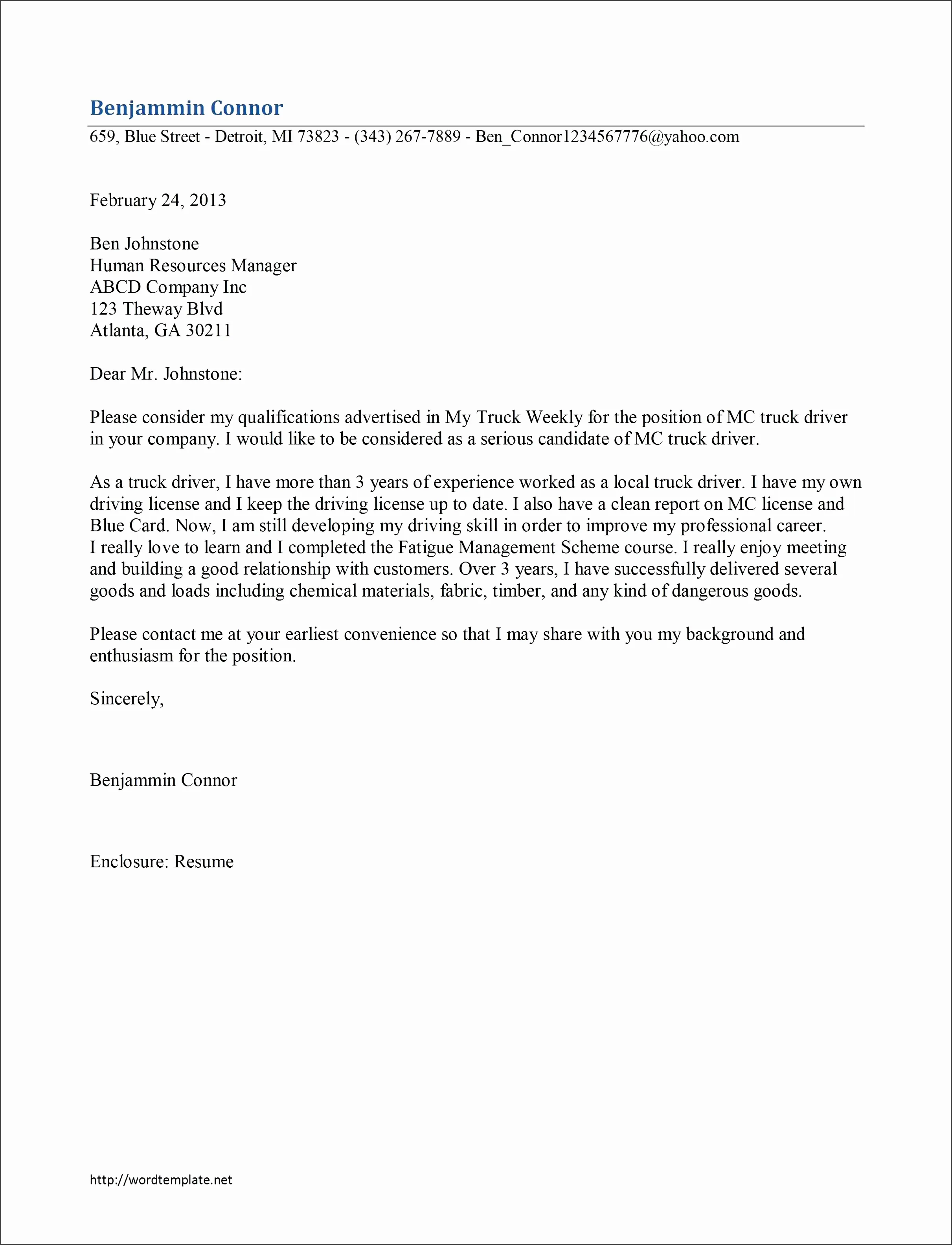What is a Cover Letter Template Word
A cover letter template in Word is a pre-formatted document that provides a framework for writing a cover letter. It offers a structured layout, with designated areas for your contact information, the recipient’s details, a personalized opening, the body where you highlight your skills and experiences, and a closing with a call to action. These templates, readily available within Microsoft Word or from online sources, streamline the cover letter creation process, saving time and ensuring a professional presentation. They are designed to be easily customizable, allowing you to adapt them to specific job applications and showcase your unique qualifications. Utilizing a template helps in maintaining consistency in formatting, ensuring that your application stands out positively and is easily readable by potential employers.
Why Use a Cover Letter Template
Using a cover letter template offers several advantages in your job search. First, it saves you a significant amount of time by providing a ready-made structure. Instead of starting from scratch, you can focus on tailoring the content to each specific job. Second, templates ensure consistency in formatting, which is crucial for a professional appearance. A well-formatted letter is easier to read and demonstrates attention to detail. Third, templates provide a guide to the key components of a cover letter, ensuring you include all necessary information such as your skills, experiences, and a clear call to action. Lastly, using a template can reduce stress, making the application process less daunting, especially for those who are new to writing cover letters or applying for multiple positions.
Benefits of Using Word Templates

Word templates offer unique benefits that make them a popular choice for cover letter creation. Microsoft Word is widely accessible, and its user-friendly interface simplifies the process of customizing templates. Word templates provide pre-designed layouts, which allows you to easily insert your information into a polished format. The software offers various formatting tools, including font selection, margin adjustments, and spacing options, enabling you to create a visually appealing document. Furthermore, Word allows easy saving, and editing of your cover letters, ensuring you can adapt them to different job applications with ease. These templates also promote consistency, ensuring that your cover letter looks professional and polished, increasing your chances of making a positive impression on hiring managers. The accessibility and ease of customization that Word templates provide makes the application process more straightforward and effective.
Key Components of a Cover Letter
A well-structured cover letter comprises several key components essential for making a strong first impression. These include a header section with your contact information, followed by the date and the recipient’s details. The body of the letter should begin with a compelling opening paragraph, followed by sections where you highlight your skills and experience, showcasing how your qualifications align with the job requirements. Tailoring your cover letter to each specific job is crucial; this means providing specific examples of your achievements. A strong closing paragraph must include a call to action, inviting the hiring manager to contact you for an interview. Proper formatting, clear language, and concise content ensure that your letter effectively communicates your value and interest in the position.
Header Section
The header section is the initial part of your cover letter, where you display your contact information. This section should include your full name, address, phone number, and email address. It is essential to ensure that this information is accurate and up-to-date. Formatting should be clean and organized, allowing the recruiter to quickly find your contact details. The header serves as a quick reference for the recruiter to contact you if they are interested in inviting you for an interview. Ensuring this section is complete and correct is crucial in maximizing your chances of getting noticed and making contact with the employer.
Contact Information
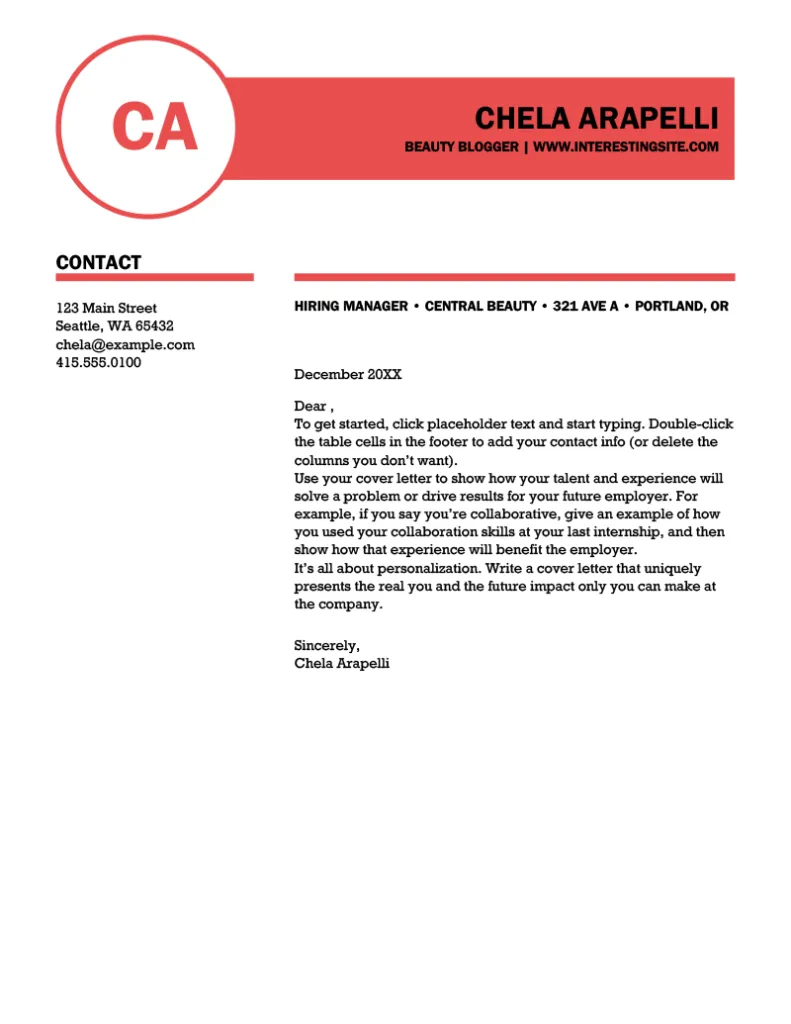
Your contact information should be easily accessible in the header. Include your full name at the top, followed by your physical address, ensuring that it is current. Below this, list your phone number; use a professional-sounding voicemail greeting to create a good first impression. Provide a professional email address; avoid using informal or outdated email addresses. Ensure that your email address is professional-looking, this enhances your credibility and makes it easier for the hiring manager to contact you promptly. Accuracy in your contact information is crucial, as it allows the recruiter to easily reach you for further communication. The correct contact information makes it easier for the employer to contact you.
Date
The date is a crucial element of your cover letter, usually placed directly below the header. Use the current date on which you are sending the letter. Ensure the date is formatted correctly, adhering to standard conventions. This helps the reader understand when the letter was written and provides context for your application. The date helps in creating a timeline, particularly if the company is reviewing multiple applications. Accurate dating is a simple yet effective way to present yourself as organized and mindful of detail. It also helps the reader see the relevance of your application.
Recipient Information
The recipient information includes details about the hiring manager or the person you are addressing. This typically includes the person’s name, title, and the company’s name and address. Always strive to address the letter to a specific individual; this personalization shows that you have researched the company and the role. If you cannot find the name of the hiring manager, search on LinkedIn, or the company website. Correct recipient information indicates that you are detailed-oriented, and that you have an interest in the company and the position. It makes your application more personable and relevant.
Body Section
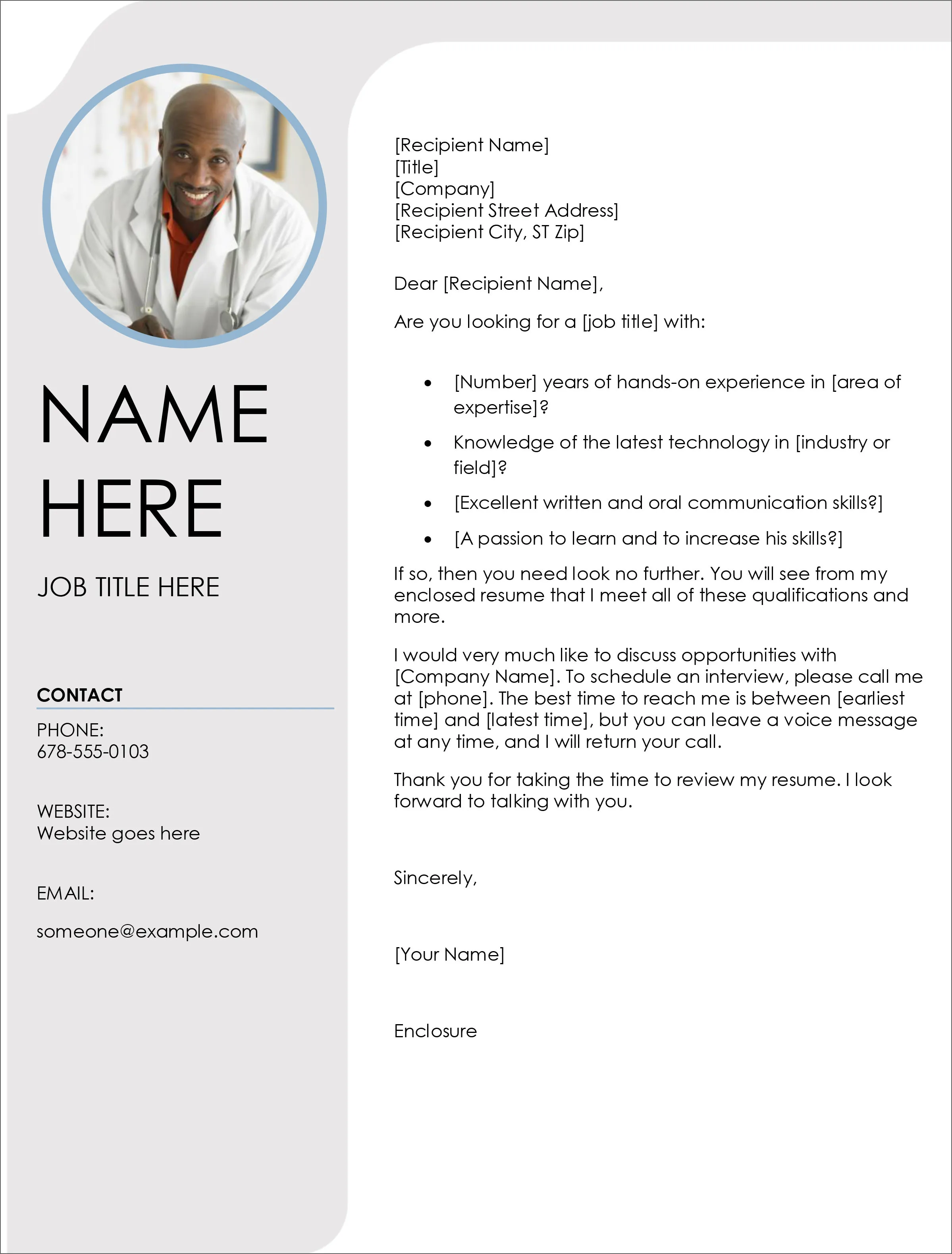
The body section of the cover letter is where you showcase your qualifications and express your interest in the job. The body typically consists of an opening paragraph, followed by one or two paragraphs where you highlight your skills, experience, and achievements. It is the core of your cover letter where you explain why you are a suitable candidate. Each paragraph should be concise, focusing on aspects of your background relevant to the job requirements. Always ensure the tone is professional and enthusiastic. The body section provides the necessary context to make your application persuasive and impactful.
Opening Paragraph
Your opening paragraph should immediately grab the reader’s attention. Start with a strong statement that indicates your enthusiasm for the position or the company. Briefly mention where you found the job posting and the specific role. Explain why you are interested in the position and what value you bring to the company. The opening sets the tone for the rest of your letter and encourages the reader to continue reading. The opening should be customized for each application, as it shows your genuine interest in the opportunity. Make it concise, engaging, and relevant to the job.
Highlighting Your Skills and Experience
In the body of your cover letter, emphasize your key skills and experiences that align with the job requirements. Refer to the job description and match your qualifications to the needs of the role. Provide specific examples of your accomplishments and explain how your skills have produced positive outcomes in the past. Quantify your achievements whenever possible, using numbers to demonstrate your impact. Show, do not tell, demonstrating your skills with tangible proof. Tailor each cover letter to each job you are applying for, selecting the relevant skills and experiences to demonstrate your suitability for the position. This alignment is very important to show how you can contribute to the company.
Tailoring Your Cover Letter

Tailoring your cover letter to each job is extremely crucial for success. Review the job description and identify the key requirements and keywords. Adapt your cover letter to emphasize the most relevant skills and experiences. This will show the hiring manager that you have taken the time to understand the specific needs of the role. Avoid using a generic cover letter for all applications. Instead, customize it to reflect the requirements of each role. This customization demonstrates your genuine interest in the position. Tailoring significantly increases the chances of your application being noticed and moving forward in the hiring process.
Quantifiable Achievements
Quantifiable achievements are important in your cover letter. When highlighting your accomplishments, use numbers to illustrate your impact. Provide specific examples, demonstrating what you achieved in previous roles. For instance, specify the percentage increase in sales you achieved. These statistics show the outcomes of your work. Quantifying your achievements provides concrete evidence and demonstrates the value that you can bring to the new role. These metrics make your accomplishments more compelling and easier for the hiring manager to understand the direct value you can offer. Include numbers to show how you can contribute to the company.
Closing Paragraph
The closing paragraph should reiterate your interest in the position and thank the reader for their time and consideration. Briefly recap your key skills and why you are a great fit for the role. Express your enthusiasm for the opportunity and restate your desire to be invited for an interview. Avoid being overly repetitive and focus on a concise and positive summary. End with a professional closing, such as “Sincerely” or “Best regards,” followed by your name. This final paragraph gives a summary of your application, and leaves the reader with a positive impression.
Call to Action
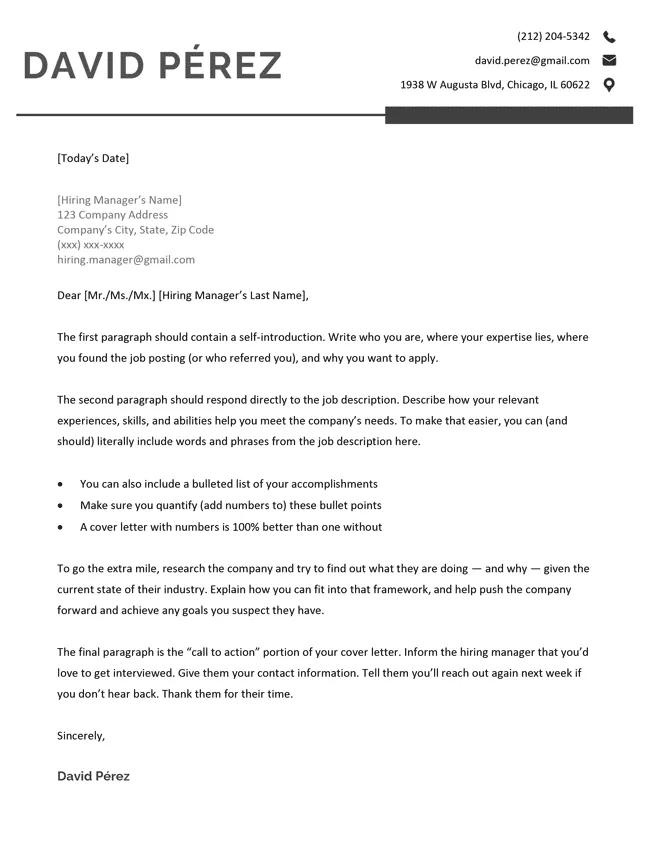
A call to action (CTA) is important in your cover letter. Include a call to action that tells the recruiter what you would like them to do next, such as inviting you for an interview. Make it clear that you are available and eager to discuss your qualifications further. Provide your contact information and specify how they can reach you. The CTA is your way to make contact with the recruiter. Ensuring you have a clear CTA will give them the direction on what action they should take, increasing your chances of progressing through the hiring process.
Formatting Tips for Word Templates
Formatting in a Word template is crucial for a professional and readable cover letter. Focus on these aspects to enhance the appearance of your document. Consistent formatting makes your cover letter easy to read and shows that you pay attention to detail. Proper formatting makes your cover letter visually appealing and makes the information easier to consume. Formatting is key to highlighting your skills and experiences clearly.
Font Selection
The font is essential for formatting your cover letter. Select a professional, readable font such as Times New Roman, Arial, or Calibri. Keep your font size between 10 and 12 points for readability. Avoid using decorative or unusual fonts. Maintain consistency in your font selection. The right font is key to creating a professional and polished look.
Margins and Spacing

Margins and spacing are important in your cover letter. Set standard margins (1 inch on all sides). Use single spacing for the main body of the text and double spacing between paragraphs. Proper spacing creates a clean and well-organized appearance. Adequate spacing gives the reader room to process the information and improves readability. This formatting makes your cover letter look neat and easy to read.
Proofreading and Editing
Proofreading and editing are essential steps to ensure your cover letter is error-free. Always check for grammatical errors, typos, and spelling mistakes. Read your letter aloud to help identify any awkward phrasing. Ask someone else to review your cover letter. Before you submit, proofread again carefully to eliminate any mistakes. Proofreading and editing are key to ensuring that your cover letter reflects professionalism. These checks enhance your credibility and increase your chances of making a positive impression on the hiring manager.
File Saving and Submission
Save your cover letter in a professional format such as PDF to maintain formatting across all devices. Name your file consistently. If the job posting specifies a particular file format, follow those instructions. Always double-check the file before submitting. The right format ensures that your cover letter is viewable across different platforms. Careful file saving and submission practices create a seamless application process, ensuring that your application is seen as a complete and professional package.
Different Cover Letter Template Examples
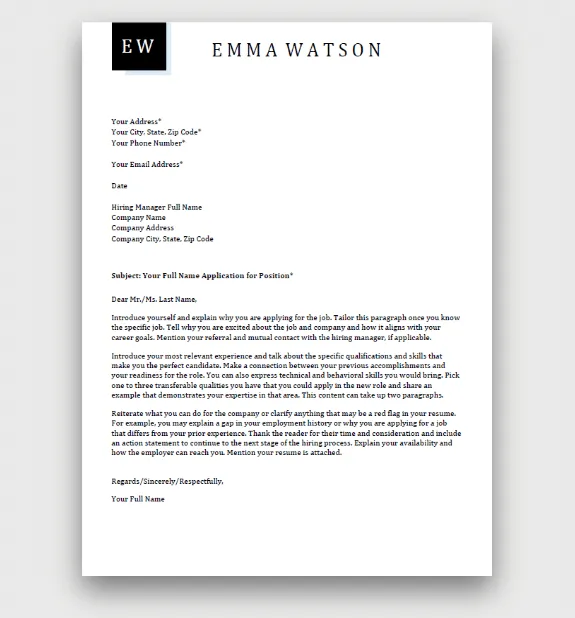
Different cover letter examples are tailored to various needs. They cater to the specific requirements of different job types and situations. Knowing the type of cover letter that works best for your situation will enhance your chances of success. It is essential to customize each letter to match the job posting. The following are some different templates to help in job applications.
Entry-Level Cover Letter
An entry-level cover letter is aimed at individuals with limited professional experience. Highlight any relevant academic achievements, internships, or volunteer work. Focus on your skills and enthusiasm for the role. Make sure to emphasize your eagerness to learn and contribute to the company. The key is to show your potential and a willingness to develop. Show how your skills can transfer to the job. A strong entry-level cover letter shows your potential and desire to start your career.
Professional Cover Letter
A professional cover letter is for those with substantial work experience. Highlight your accomplishments and skills. Focus on results, quantifying your achievements whenever possible. Tailor your letter to the job and industry. Make sure your accomplishments are directly related to the job posting. Make sure to show your expertise and how you can add value to the company. This level of detail shows that you understand the job requirements.
Cover Letter for Specific Industries
Cover letters can be customized for specific industries. Research the industry’s standards and expectations for cover letters. Tailor your language, and the structure of your letter to match. Highlight any specific skills or experiences that are relevant to that industry. For certain industries, it may be beneficial to include specific keywords. Tailoring your cover letter to the industry increases your chances of being noticed and showing that you have the required knowledge and experience. Showing the recruiter that you have the required experience to do the job is key to getting hired.
Where to Find Cover Letter Templates in Word
Microsoft Word is a great place to find templates for cover letters. There is a large selection of pre-designed templates that you can customize. They are easy to access within the Word application. Explore the template options in Word to find a template that suits your needs. This is an easy way to get a professional cover letter. Making sure the template suits your requirements helps in the job search.
Microsoft Word Templates
Microsoft Word offers a variety of cover letter templates. You can find these templates by opening Word. Browse through the template gallery to find a design that fits your preferences. Customize the template with your information. Microsoft Word is easy to use and provides professional-looking templates. Customize the information according to your specific needs, ensuring that it is accurate and tailored to each job. This will create an effective and well-presented cover letter.
Online Template Resources
There are many online resources. Websites like Canva, and other job search sites offer a variety of cover letter templates. These sites have a diverse range of designs. Select a template that matches your job application. These templates often offer additional customization options and are designed to be user-friendly. Using online resources increases your options for finding a template that suits your needs. These online resources offer an easy way to find templates.
Tips for Customizing Templates
Customizing cover letter templates is crucial to make a strong impression. Personalize the template. Tailor the content. Incorporate your skills. Avoid using the exact words of the template. Customizing the content enhances the letter’s effectiveness. Make sure that your letter clearly conveys your value. This customization increases your chances of getting noticed by the hiring manager.
Personalizing the Template
Personalize the template by adding your specific information and making it your own. Include your unique skills. Tailor the examples to match the job requirements. Make the tone of your letter reflect your personality and enthusiasm. Avoid generic phrases. Make sure to show the reader your interest in the job. A personalized cover letter creates a stronger connection. Personalizing your template shows that you are interested in the job.
Adapting to Different Job Applications
Adapting your cover letter for different job applications is a key step to success. Customize the content to match the specific requirements. Highlight your most relevant skills and experiences. Show how your qualifications meet the needs of the job. Tailor the letter for each application to enhance its impact. Make sure your letter stands out. Adapting your cover letter helps in showing your value for the job. It shows the hiring manager that you are the best candidate.
Mistakes to Avoid in Cover Letter Templates
Avoiding common mistakes in cover letter templates is key to making a positive impression. Knowing the common mistakes will enhance the professionalism of your application. Making these simple corrections increases your chances of getting an interview. The following are some of the common mistakes.
Generic Content
Avoiding generic content is a key factor. Replace generic phrases. Avoid writing the same thing as everyone else. The cover letter should highlight your achievements. The language used should be tailored to the specific job. Make sure that you demonstrate your skills and experience. A personalized cover letter is more effective. This will help you stand out in the job search.
Typos and Grammatical Errors
Typos and grammatical errors can undermine your application. Proofread your cover letter for these mistakes. These errors can impact your credibility. Use a spell-checker and grammar-checker tool. Ask someone to review your cover letter. Ensure the tone and language are clear and professional. Thorough proofreading is essential to creating a good impression.
Irrelevant Information
Including irrelevant information is a common mistake. Focus on your skills and experiences. Ensure the content is tailored to the job requirements. Avoid details that do not support your application. Your cover letter should be clear and concise. Focus on your key qualifications to make a good impression. This focus will show the hiring manager how you can contribute to the company.
